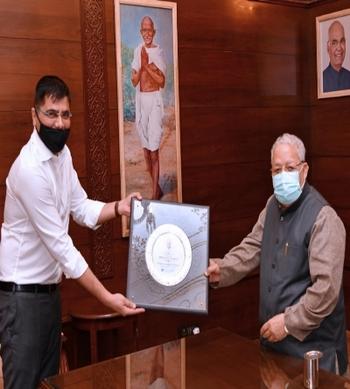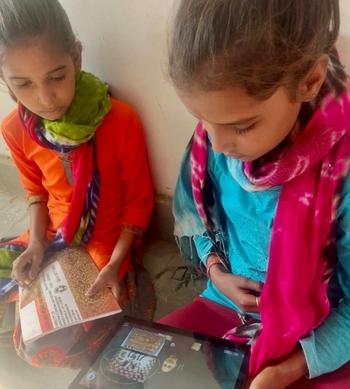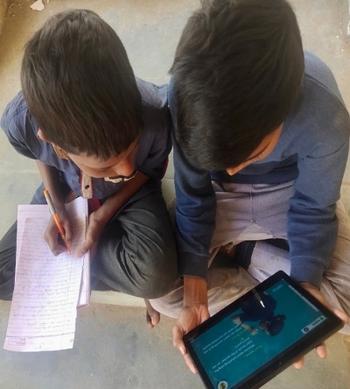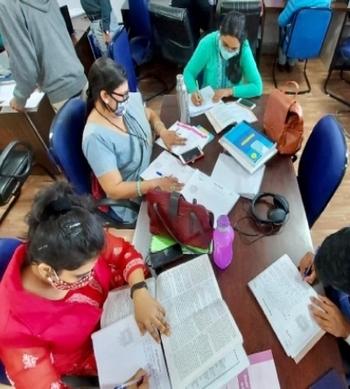CBSE Class 11 Maths Syllabus 2022-2023
Theory Paper
Time: 3 Hours Max Marks: 80 | |||
No. | Units | No. of Periods | Marks |
I | Sets and Functions | 60 | 23 |
II | Algebra | 50 | 25 |
III | Coordinate Geometry | 50 | 12 |
IV | Calculus | 40 | 08 |
V | Statistics and Probability | 40 | 12 |
| Total | 240 | 80 |
| Internal Assessment |
| 20 |
Skip to
Download CBSE Class 11th Maths Syllabus
Unit-I: Sets and Functions
1. Sets (20 Periods)
Sets and their representations, Empty set, Finite and Infinite sets, Equal sets, Subsets, Subsets of a set of real numbers especially intervals (with notations). Universal set. Venn diagrams. Union and Intersection of sets. Difference of sets. Complement of a set. Properties of Complement.
2. Relations & Functions (20 Periods)
Ordered pairs. Cartesian product of sets. Number of elements in the Cartesian product of two finite sets. Cartesian product of the set of reals with itself (upto R x R x R).Definition of relation, pictorial diagrams, domain, co-domain and range of a relation. Function as a special type of relation. Pictorial representation of a function, domain, co-domain and range of a function. Real valued functions, domain and range of these functions, constant, identity, polynomial, rational, modulus, signum, exponential, logarithmic and greatest integer functions, with their graphs. Sum, difference, product and quotients of functions.
3. Trigonometric Functions (20 Periods)
Positive and negative angles. Measuring angles in radians and in degrees and conversion from one measure to another. Definition of trigonometric functions with the help of unit circle. Truth of the identity sin2x + cos2x = 1, for all x. Signs of trigonometric functions. Domain and range of trigonometric functions and their graphs. Expressing sin (x±y) and cos (x±y) in terms of sinx, siny, cosx & cosy and their simple applications. Deducing identities like the following:
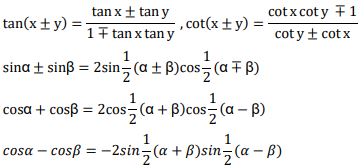
Identities related to sin2x, cos2x, tan2 x, sin3x, cos3x and tan3x.
Unit-II: Algebra
1. Complex Numbers and Quadratic Equations (10 Periods)
Need for complex numbers, especially √−1, to be motivated by inability to solve some of the quadratic equations. Algebraic properties of complex numbers. Argand plane
2. Linear Inequalities (10 Periods)
Linear inequalities. Algebraic solutions of linear inequalities in one variable and their representation on the number line.
3. Permutations and Combinations (10 Periods)
Fundamental principle of counting. Factorial n. (n!) Permutations and combinations, derivation of Formulae for nPr and nCr and their connections, simple applications.
4. Binomial Theorem (10 Periods)
Historical perspective, statement and proof of the binomial theorem for positive integral indices. Pascal’s triangle, simple applications.
5. Sequence and Series (10 Periods)
Sequence and Series. Arithmetic Mean (A.M.) Geometric Progression (G.P.), general term of a G.P., sum of n terms of a G.P., infinite G.P. and its sum, geometric mean (G.M.), relation between A.M. and G.M.
Unit-III: Coordinate Geometry
1. Straight Lines (15 Periods)
Brief recall of two dimensional geometry from earlier classes. Slope of a line and angle between two lines. Various forms of equations of a line: parallel to axis, point -slope form, slope-intercept form, two-point form, intercept form, Distance of a point from a line.
2. Conic Sections (25 Periods)
Sections of a cone: circles, ellipse, parabola, hyperbola, a point, a straight line and a pair of intersecting lines as a degenerated case of a conic section. Standard equations and simple properties of parabola, ellipse and hyperbola. Standard equation of a circle.
3. Introduction to Three-dimensional Geometry (10 Periods)
Coordinate axes and coordinate planes in three dimensions. Coordinates of a point. Distance between two points.
Unit-IV: Calculus
1. Limits and Derivatives (40 Periods)
Derivative introduced as rate of change both as that of distance function and geometrically. Intuitive idea of limit. Limits of polynomials and rational functions trigonometric, exponential and logarithmic functions. Definition of derivative relate it to scope of tangent of the curve, derivative of sum, difference, product and quotient of functions. Derivatives of polynomial and trigonometric functions.
Unit-V Statistics and Probability
1. Statistics (20 Periods)
Measures of Dispersion: Range, Mean deviation, variance and standard deviation of ungrouped/grouped data.
2. Probability (20 Periods)
Events; occurrence of events, ‘not’, ‘and’ and ‘or’ events, exhaustive events, mutually exclusive events, Axiomatic (set theoretic) probability, connections with other theories of earlier classes. Probability of an event, probability of ‘not’, ‘and’ and ‘or’ events.
Conclusion
In conclusion, the Class 11th syllabus marks the beginning of an important phase in your educational journey. It offers a diverse range of subjects that cater to different interests and career paths, whether it be the Sciences, Commerce, or Humanities. The syllabus is designed to provide you with a solid foundation of knowledge, critical thinking skills, and practical application.
FAQs
1.What subjects are included in the Class 11th syllabus?
The subjects included in the Class 11th syllabus vary depending on the stream chosen. Common subjects include Physics, Chemistry, Biology, Mathematics, Accountancy, Business Studies, Economics, History, Political Science, Sociology, Psychology, English, and a second language.
2.How should I prepare for Class 11th exams?
To prepare for Class 11th exams, it is important to develop a systematic study schedule. Understand the syllabus and exam pattern for each subject. Take comprehensive notes during classes, engage in regular revision, and solve practice questions and sample papers. Seek guidance from your teachers, clarify doubts, and focus on understanding concepts rather than rote memorization.
3.Are practical's important in Class 11th?
Yes, practicals are an integral part of the Class 11th syllabus, especially in Science subjects. Practical experiments help you understand theoretical concepts, develop scientific skills, and enhance your understanding of the subject. Pay attention during practical sessions, follow instructions carefully, and maintain accurate records of your experiments.
Download CBSE Class 12th Maths PDfF

MissionGyan Team
We aim to eradicate the education gap and serve equal and free education to all with the help of skilled and expert volunteers and teachers.

